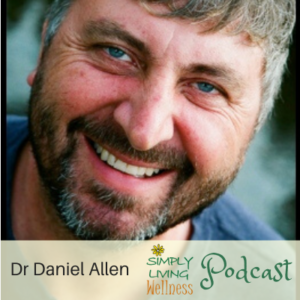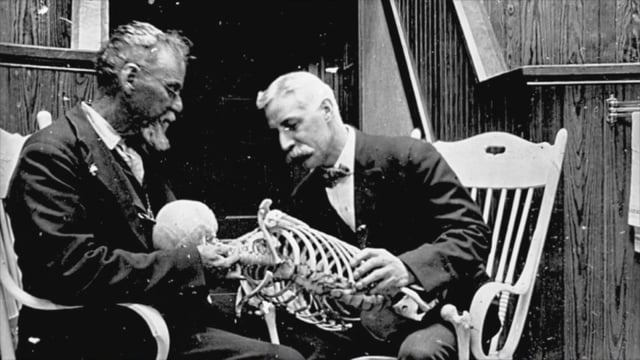Podcast: Play in new window | Download (55.5MB) | Embed
Subscribe: Google Podcasts | Email | RSS | More

In this episode of Simply Living Wellness, Donna Abreu interviews guest Dr. Daniel Allen about the original practice of Osteopathy – hands on Osteopathy. It’s difficult to find doctors who practice this original form of hands on healing and body manipulation.
Dr Alex explains how this practice has changed over time and has become more of a traditional medical practice moving away from the hands on approach. This change is particularly true in the United States. In Canada and Europe, one can still readily access the hands on healing approach by practitioners of cranial osteopathic medicine.
What is osteopathy? Well, according to Medical News today, osteopathy is defied as…
“An osteopathic physician will focus on the joints, muscles, and spine. Treatment aims to positively affect the body’s nervous, circulatory, and lymphatic systems. Manual medicine means that both diagnosis and treatment are carried out with the hands. Osteopathy is a complementary therapy.”
Let’s hear about it from Dr. Allen who has practiced and studied this practice for over 30 years.
Discover:
- How the bones in our skulls are not fused like traditional belief, rather have inherent motion, a physiological joint motion. Dr Allen refers to this as the inherit fluid breathing life mechanism.
- How a slight and subtle movement of the doctor’s hands (it really does feel like he’s hardly doing anything!) can have a profound affect on the body’s ability to heal, especially from pain.
A little bit About Dr Allen’s background…
Dr Danial Allen was birthed by the same general doctor he saw growing up for commons colds or broken limbs. When he broke his leg, he was taken to this general doctor, who in the back room, made a wooden splint with his chainsaw while Dr Allen as a young child waited in the treatment room.
Fast forward to Dr Allen’s years in traditional medical school, he felt fortunate enough to travel to national conventions and weekend craniosacral workshops where he learned that the bones in the skull have inherent movement.
No one had mentioned this movement in biology, life sciences or medical school, and so this discovery fascinated Dr Allen. Medical doctors teach and talk about a fused skull that does not move. At first, Dr Allen was angry at this vast difference in teachings and beliefs.
He later discovered that the word “inherent” is what scientists dispute. “What makes the motion?”, they would question. “There are no muscles inside the central nervous system to cause this motion.” Yet, Dr Allen learned that motion does not just exist as fluid motion or breathing motion, or heart circulatory motion, but that motion is also inherent. It’s the cells themselves in the bones that expand and contract.
The bones in the skulls actually have joints in between them called sutures. These sutures have a synovial fluid in the articulations of the bones. If you look closely at each suture, it describes a motion. The sutures have bevels on one side and bevels on the other, as well as pivot points. If you look at just one bone it doesn’t seem possible, but if you look at the whole skull as a unit you see how the sutures/joints of the bones describe a motion.
For example, the temporal bone where it meets the parietal bone has a sliding nature. And where the temporal bone meets the sphenoid bone, you’ll find a pivoting nature. And where the temporal bone meets the occipital bone, you’ll find a jack lift – a jugular process that actually lifts up in an axis of motion that is consistent all throughout the skull.
Dr Allen realized that the bones are not fused at all, rather they have subtle motion, physiological joint motion. Later studies in Biodynamic Cranial Work taught him to learn to listen to the fluids of the body and to the the quality of the movement, the quality of the breathing and of the field of the nervous system.
He also realized there is a lot more to medicine that he originally learned.
Dr Allen practices the original, hands on form of osteopathy. Modern American osteopathy is full blown MD-style medicine. Yet, one can still find doctors and practitioners that practice the original form of this practice which is a hands-on approach, especially if you are willing to travel to Canada or Europe.
In the 1990’s, the insurance companies started to take over medicine, dictating what doctors could do or not do. Payments were made based on diagnostic codes, so the focus for doctors became identifying diagnostic codes and identifying and addressing those in their patient visits.
Medicine moved away from patient care and into managed care.
Medicine has moved so far away from natural healthcare. Our only hope is that the modern medical students who are lucky enough to have exposure on the side to modalities such as natural medicine, homeopathy, yoga practices, craniosacral practices, healthcare practices and nutrition practices can bring those interests into their medical training and can carve their way into more of a holistic medical practice. We are moving in that direction but still a couple of decades away.
Human beings are livings things and should be treated as living things, not as pieces and parts.
What students need it “full spectrum” training as Dr Allen calls it. If you are taking care of a human being one should have hands on training and experience. Hospitals work at handling medical diseases. Serious problems require traditional medicine and cannot benefit from just hands on work. Yet, Physicians can make more useful and clearer decisions, and rule out unknowns if they have additional hands on experiences and trainings.
How Does Craniosacral Fit In?
Craniosacral is becoming quite popular and well known. Many massage therapists incorporate craniosacral into their work. It’s important to find a well trained practitioner. Even though the movement is so subtle and it feels like they’re hardly doing anything as you’re lying on the table, if it’s not done correctly, it could actually be damaging.
The other problem is that the craniosacral work may not be very effective by an inexperienced practitioner. So then you end up with a portion of the population who say they’ve tried a craniosacral treatment, and yet say, “it didn’t do anything for me. In fact, it gave me a headache, so I’m not going back.” Those experiences are a detriment to the movement of the hand on healing work.
So you do have to be careful who you let squish your head!
How does one find a qualified practitioner?
It’s good to get very specific and ask your practitioner about their experience and how they became a i worker. If they say they’ve taken a weekend course and have been doing it for 6 months, maybe that’s not the best person to see.
There are good non-physician body workers who are very, very good. Dr. Allen knows several. Some people just have a natural ability. He helped trained a nurse midwife once who was exceptional. She just took to the work, had a feel for living systems, and her hands were a gift to her. And she was able to use them to treat newborns.
Craniosacral Work Can Release Emotions Stuck in the Body
Emotions that are felt or taken on from years ago (even from past lives or from our DNA that has been passed down by generations) often stay stuck in the body especially when they were traumatic. For example, it’s been known that if you had a great, great, great Grandmother who was burned at the stake for being a “witch”, that pain and trauma can be passed down throughout the generations in the DNA. Until those emotions are released from the cells DNA, it will continue to be passed down often causing emotional problems.
It’s important for the practitioner to hold space for the patient during these emotional releases, otherwise, it could actually cause more damage.
“Emotions have a huge impact. I love homeopathy for that reason. Maybe we don’t really understand the physiological basis of life”, says Dr. Allen.
Dr. Allen now working more in the vibrational world using tuning forks and vibrational bowls and singing bowls. Using those devices along with his hands on palpating the tissues response has been very effective for Dr. Allen.
Homeopathy is just a refined vibrational tool in the higher frequencies, as well as acupuncture and acupressure. All of it is shifting the vibrational whole. And then one may start to think that it’s maybe an ancestral vibration – even deeper than childhood, deeper than DNA. It’s a vibrational field that’s transmitted through the lineage of life… and that thought doesn’t even jump over into the spiritual realm. Now we’re getting really deep!
But we are still so far away from really understanding the vibrational energies.
Can one study what Dr Allen studied?
Is it still possible for one to train and study on hands osteopathic medicine and build a practice such as Dr. Allen’s? Can one do it even without going through a full traditional MD training.
To study osteopathic medicine in the United States, one has to go the traditional medicine route for studies. Dr Allen prefers this route which he refers to as “full spectrum training”. His background in traditional medical allows him to make clearer decisions and rule out unknowns when doing the hands on work. In Canada and Europe, however, osteopathy training is separate from the traditional medical training. They don’t do hospital medicine or prescription medicine rather just study the hands on medicine.
Osteopathic medicine teachings, however, has been expanding quickly in the last 10-15 years. There were 18 schools in the US when Dr. Allen went to school, and now there are 38, thirty years later. This growth is partly due to political changes in medicine and partly due to modern educational systems trying to full needs in rural locations that were short of physicians. Doctor specialties have become widely popular in the medical field and specialty practices require larger populations, leaving the rural areas with a shortage of practicing physicians.
More About Dr. Daniel Allen
Dr. Allen has been involved in the clinical practice of Osteopathic Medicine for 22 years. Born in a rural family in western New York State, his early years were a mixture of basic skills from bailing hay and tractor driving to playing the piano and community theater performance.
Finding his way to Osteopathic medical school in Kansas City in 1986, He expected to become a general country physician. He focused his interest on the traditional osteopathic philosophies of “knowing the patient down to the bone” with developing his hands on skills. In the summer of 1987, Dr. Allen took his first week long Cranial Osteopathy Course and experienced the inherent fluid breathing life mechanism for the first time.
From that point on his life was altered. He knew he could not go back to just following the hard science model that human life was simply a complex system of chemical reactions.
You can learn more about Dr. Daniel Allen at his website: http://www.drdanielallen.com/
Resources Mentioned in the Podcast
American Academy of Osteopathy, (AAO): For basic osteopathic manipulation (more in the physical realm).
Cranial Academy: For craniosacral specifically.
James Jealous: A Biodynamics physicians directory which Dr. Allen considers the highest level of Osteopathic Hands On Care.









